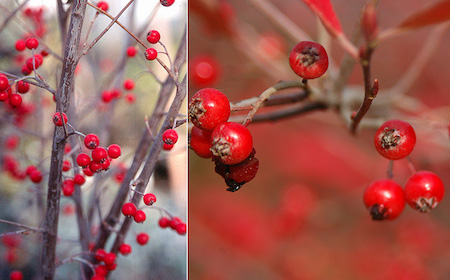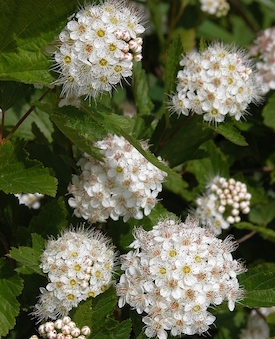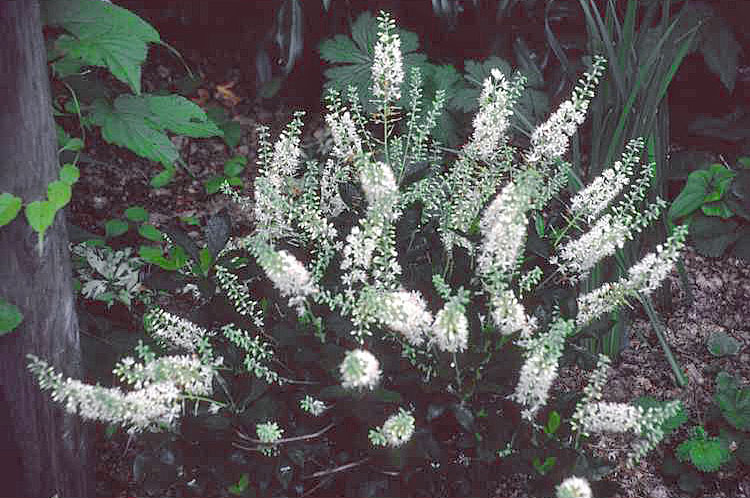The Townhouse Garden
Small Shrubs for Small Spaces
By Susan Stager, Fairfax Master Gardener

Ilex glabra ‘Shamrock’
The ‘Shamrock’ variety of Inkberry Holly (Ilex glabra) grows up to 4 feet. Inkberry hollies are a native evergreen replacement for boxwood, and they tolerate wet soil. You will need male and female plants to have berries. They can get leggy, showing their lower stems. These could be your evergreen foundation planting (to hide your home foundation and hang your holiday lights) and then plant perennials in front.

Aronia arbutifolia ‘Brilliatissima’ berries

Ninebark – Physocarpus opulifolius
Another shrub with winter bark interest is dwarf red twig dogwood. It is a dogwood that is a shrub, not a tree. Cornus sericea ‘Kelseyi’ needs sun and could also act as a foundation plant, because those striking red twigs will show up against the side of your home. It is 2 to 3 feet tall, and you will still need to prune it regularly, for good air circulation and shape. It prefers moist soil. In late spring you will get white flowers turning to white berries in the fall.

Clethra alnifolia
Clethra alnifolia, Summersweet, produces gold to yellow foliage, even in shade. This native attracts pollinators with very fragrant white flowers in June and July. The ‘Sixteen Candles’ variety stays at 3 to 4 feet. It prefers consistently moist acidic sandy soils.
Resources
• Dwarf Ninebark, Conservation Garden Park, West Jordan, Utah
• Aronias: Native Shrubs for Fall Color, Cathy Caldwell, Piedmont Master Gardeners, Albemarle
County, VA
• Selecting Plants for Virginia Landscapes: Showy Flowering Shrubs, Alex X Niemiera, Virginia
Cooperative Extension
• Problem free shrubs for Virginia landscapes, Mary Ann Hansen, Alex Niemiera and Eric Day, Virginia
Cooperative Extension
• Native Shrubs for the Washington, DC Area, Brenda Skarphol, Green Spring Gardens, Fairfax County, VA
• Managing Landscape Pests through Better Plant Selection, Charlotte Glen, North Carolina State
Extension